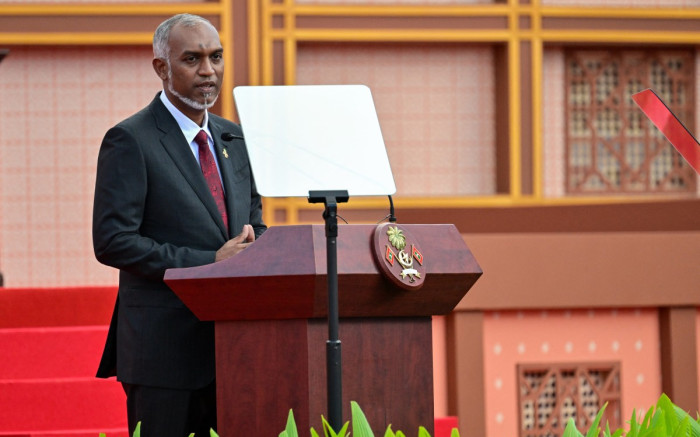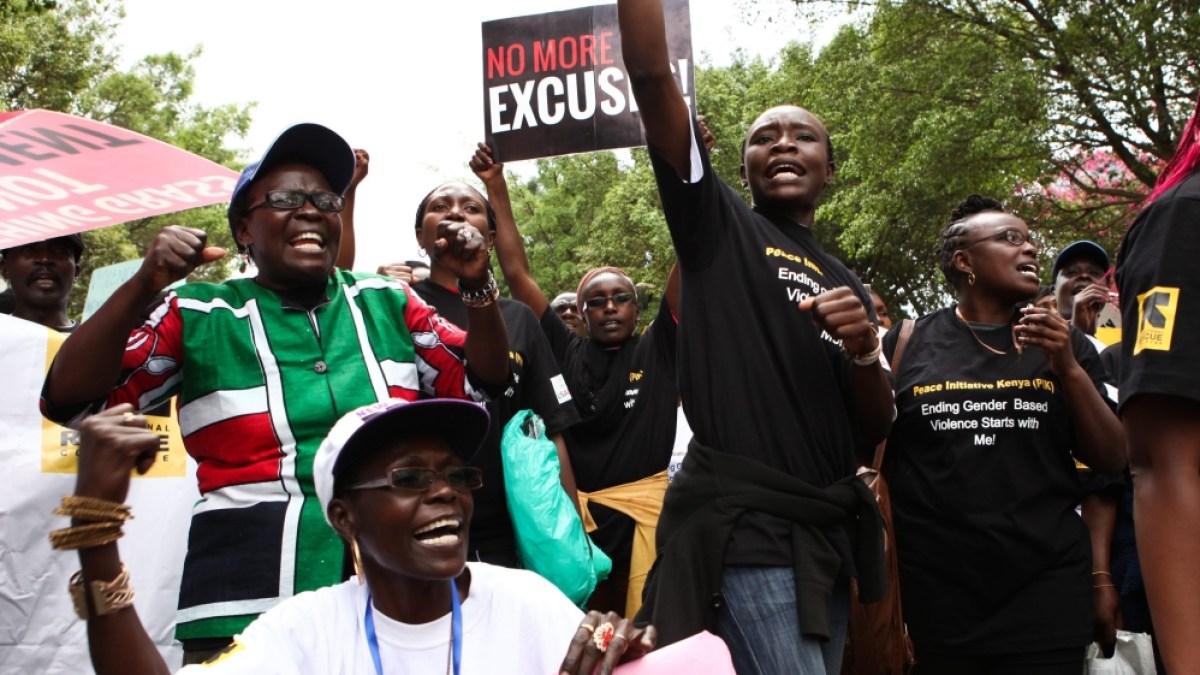
President Mohamed Muizzu promises the low-lying country will beat back the waves through ambitious land reclamation and island building – but policies that environmental and human rights groups warn could actually worsen the threat of flooding.
Maldives President Mohamed Muizzu speaks after reading out the oath during his inauguration ceremony in Male, November 17, 2023. Image: AFP
MALÉ, Maldives (AP) — Rising sea levels are threatening to flood the Maldives and the Indian Ocean archipelago is already running out of drinking water, but the new president says he has scrapped plans to relocate citizens.
Instead, President Mohamed Muizzu is promising that the low-lying nation will beat back the waves through ambitious land reclamation and island building – policies that, however, environmental and human rights groups warn, could actually worsen the threat of flooding.
The upscale holiday destination is famous for its white-sand beaches, turquoise lagoons and vast coral reefs, but the chain of 1,192 tiny islands is on the front lines of the climate crisis and struggling to survive.
Former President Mohamed Nasheed began his term 15 years ago warning citizens they could become the world’s first environmental refugees who would have to be resettled in another country.
He wanted the Maldives to start saving to buy land in neighboring India, Sri Lanka or even far away in Australia.
But Muizzu, 45, called for $500 million in foreign funding to protect vulnerable coastlines and said his citizens would not leave their homeland.
“If we need to increase the area for housing or other economic activities, we can do that,” Muizzu told AFP, speaking from the crowded capital Male, surrounded by concrete walls.
“We are self-sufficient and can take care of ourselves.”
“NO FRESH WATER”
The small nation of Tuvalu signed an agreement this month giving its citizens the right to live in Australia if their Pacific homeland sinks into the sea.
But Muizzu said the Maldives would not follow that path.
“I can say categorically that there is no need for us to buy or even lease land from any country,” Muizzu said.
Dikes would ensure that risk areas can be “categorized as a safe island,” he said.
But 80% of the Maldives is less than one meter above sea level.
And while fortress-like walls of densely packed settlements can keep out the waves, the fate of the beach islands that tourists visit is uncertain.
According to the World Bank, tourism accounts for almost a third of the economy.
Nasheed’s predecessor, Maumoon Abdul Gayoom, was the first to warn of the possible “death of a nation” and warned the United Nations in 1985 about the threat of sea level rise linked to climate change.
The United Nations’ Intergovernmental Panel on Climate Change (IPCC) warned in 2007 that a rise of 18 to 59 centimeters would make the Maldives virtually uninhabitable by the end of the century.
The warning lights are already flashing red.
Gayoom’s fears that his country could run out of drinking water have already come true as rising salinity levels enter the country and spoil the drinking water.
“Every island in the Maldives has run out of fresh water,” said Shauna Aminath, 38, environment minister until last week, when Muizzu’s government took power.
Almost all of the archipelago’s 187 inhabited islands rely on expensive desalination plants, she told AFP.
“Finding ways to protect our islands has been an important part of our attempt to adapt to these changes,” Aminath said.
ENVIRONMENTAL REGULATIONS “IGNORED”
The capital Malé, where a third of the country’s 380,000 residents are crammed onto a tiny island, is “one of the most densely populated areas in the world” with 65,700 people per square kilometer, according to the Environment Ministry.
A huge dam already surrounds the city, but Muizzu said there was potential for expansion elsewhere.
Reclamation projects have already increased the country’s landmass by about 10% over the past four decades by pumping sand onto submerged coral platforms totaling 30 square kilometers.
Muizzu, a British-trained civil engineer and former construction minister for seven years, played a key role by overseeing the expansion of the artificial island of Hulhumale.
Hulhumale is connected to the capital by a Chinese-built 1.4-kilometer bridge, with high-rise buildings rising high above the blue sea. Hulhumale is twice the size of Male and is home to around 100,000 people.
But environmental and human rights groups warn that while cleanup is necessary, it must be done carefully.
In a recent report, Human Rights Watch (HRW) accused authorities of failing to implement their own environmental regulations, saying cleanup projects were “often rushed” and lacked adequate mitigation measures.
Examples cited were an airport on Kulhudhuffushi where 70% of the island’s mangroves were “buried” and a rehabilitation project in Addu that damaged the coral reefs on which fishermen depend.
“The Maldives government has ignored or undermined environmental protection laws, increasing the risk of flooding and other damage to island communities,” HRW said.
Ahmed Fizal, who heads environmental campaign group Marine Journal Maldives (MJM), said he feared politicians and businessmen would see shallow lagoons as potential reclamation areas that could make quick profits.
“You have to ask yourself, ‘What is the limit, what is the actual cost of the cleanup?'” he said.






Recent Comments